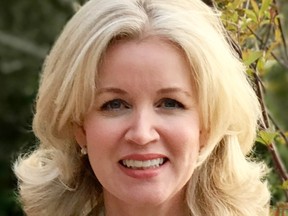
The Canadian economy was treading water at the end of 2022, the latest GDP report shows, but beneath the disappointing data is resilient consumer spending keeping the economy afloat.
On Tuesday, Statistics Canada said real gross domestic product was unchanged in the fourth quarter of 2022 after five consecutive quarters of growth.
The report, which said the economy contracted by 0.1 per cent in December, showed a much grimmer economy than forecasters were expecting as higher interest rates took a more noticeable toll on the economy.
Statistics Canada's preliminary estimate had predicted 1.6 per cent annualized growth for the quarter.
But Statistics Canada expects the economy bounced back in January, posting 0.3 per cent growth in real GDP.
The fourth quarter also included some silver linings for Canadians. After declining by 0.1 per cent in the third quarter, household spending bounced back by 0.5 per cent in the fourth quarter.
TD's director of economics James Orlando said the consumer, which is "the real engine of the Canadian economy," is still faring relatively well.
"Overall, the headline print looks really bad. But when you pull back the lens ... Some of the underlying fundamentals are still coming in quite good for the Canadian economy," Orlando said.
The fourth quarter slowdown was largely driven by businesses accumulating less inventory than in the previous two quarters.
Orlando said inventories reached record levels earlier in the year as a result of easing supply chains. But that accumulation wasn't expected to last.
In addition to lower inventories, real business investment declined for a third consecutive quarter as higher interest rates weakened housing investment in 2022.
Although growth stalled for the quarter, Canadians saw their disposable incomes rise faster than their nominal spending, allowing them to save more money.
The federal agency said the household savings rate was six per cent in the fourth quarter, up from five per cent the previous quarter.
The report partly attributes this improvement in household finances to government benefits, including the one-time top-up to the GST tax credit and a 10 per cent increase in Old Age Security payments for seniors aged 75 years and over.
The Liberal government introduced these measures targeted at lower-income Canadians to help them cope with higher inflation.
"All of this together means more money in the pockets of Canadians and ... that Canadians are going to spend more," Orlando said.
Looking ahead, Orlando said recent economic data has been coming in "much better than expected."
The latest labour force survey showed the economy added 150,000 jobs last month, suggesting there's still steam on the hiring front. Retail sales were also up in January.
These figures support forecasts for a rebound for economic growth in January.
But most economists expect the Canadian economy won't be able to avoid a recession in the first half of the year as higher interest rates dampen spending.
Since March, the Bank of Canada has raised its key interest rates from near-zero to 4.5 per cent, the highest it's been since 2007.
The central bank announced in January it would take a conditional pause on hiking rates to assess how the economy is responding to higher interest rates.
If the economy continued to run hot or inflation proved sticky, the Bank of Canada made it clear it would be ready to jump back in and raise rates further.
But Orlando said it's likely content with its decision to sit on the sidelines, given the softer GDP report.
The Bank of Canada is set to make its next interest rate decision on March 8.
The central bank contends a slowdown is necessary to bring inflation back down to its two per cent target.
After peaking at 8.1 per cent in the summer, Canada's annual inflation rate slowed to 5.9 per cent in January.
The Bank of Canada is forecasting inflation will slow to three per cent by mid-2023 and fall back to the two per cent target next year.
It's hoping inflation can come back down to target without a sharp economic downturn. At the same time, the central bank has stressed that returning to normal price growth is its primary focus, one that could come at the expense of a more severe economic contraction.
This report by The Canadian Press was first published Feb. 28, 2023.
https://news.google.com/rss/articles/CBMigQFodHRwczovL3d3dy5jdHZuZXdzLmNhL2J1c2luZXNzL2NhbmFkaWFuLWVjb25vbXktcG9zdGVkLW5vLWdyb3d0aC1pbi1mb3VydGgtcXVhcnRlci1idXQtY29uc3VtZXItc3BlbmRpbmctaXMtaG9sZGluZy1vbi0xLjYyOTIyNTDSAQA?oc=5
2023-02-28 18:21:51Z
1806800530
















/cloudfront-us-east-1.images.arcpublishing.com/tgam/OD67WDG2P5NDLNIQ2UWD32NDNE.JPG)



/cloudfront-us-east-1.images.arcpublishing.com/tgam/JCDA74OJDJOILEAPVRNHDQ3LIY.JPG)

Comments
Postmedia is committed to maintaining a lively but civil forum for discussion and encourage all readers to share their views on our articles. Comments may take up to an hour for moderation before appearing on the site. We ask you to keep your comments relevant and respectful. We have enabled email notifications—you will now receive an email if you receive a reply to your comment, there is an update to a comment thread you follow or if a user you follow comments. Visit our Community Guidelines for more information and details on how to adjust your email settings.
Join the Conversation